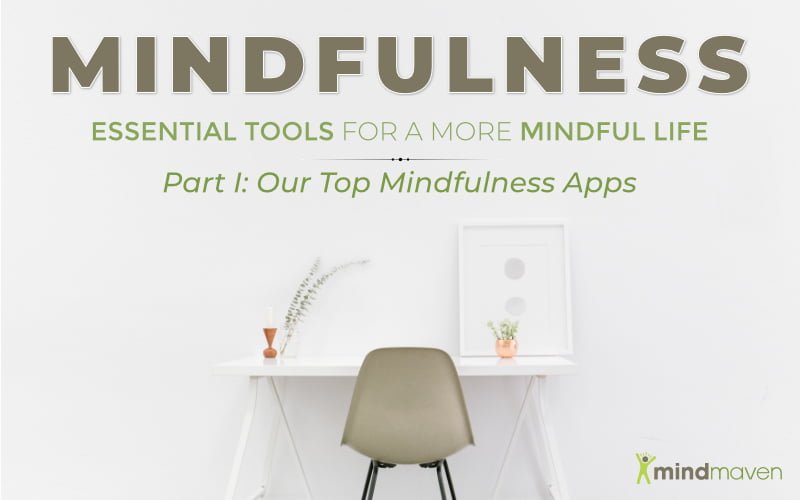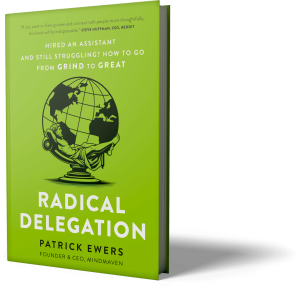“Happiness lies not in finding what is missing, but in finding what is present.”
– Tara Brach, PhD, psychologist, author and teacher of meditation, emotional healing and spiritual awakening
The concept of “mindfulness” is becoming increasingly commonplace these days. But despite that, it often seems there’s a lack of clarity around what exactly it is, and the mindfulness apps and tools that allow you to achieve it. That ambiguity can make mindfulness feel inaccessible to some of the people who would most benefit from it.
At Mindmaven, we believe ambiguity is the enemy of change, so we have a very simple definition: Mindfulness is simply the art of being completely present in the moment.
It’s a simple concept with roots in ancient Buddhist philosophy, yet today it’s practiced by bhikkhu monks, busy parents, and overworked CEOs alike.
That’s Great, but Why Should I Listen to You?
Many don’t know this, but Mindmaven owes its existence to mindfulness.
It began nearly 13 years ago, when my wife and I decided to pursue a lifelong dream: Exploring the world.
The decision was rooted in a deep desire to get “back to basics.” After so many years of living in Silicon Valley, it’s easy to fall into the trap of Bay Area Blinders, or experiencing the world through a limited, tech industry-specific perspective—a perspective that simply isn’t real or relatable for most.
So we packed up the essentials and spent the next 10 months traveling. The goal for our trip was simple: To experience happiness and fulfillment in other cultures. I could share story-after-story about this, but one, in particular, stands out.
We were passing through small Amazon Basin village at the heart of an Ecuadorian jungle and, as we looked around at the families just living their lives, they all radiated joy, contentment, and satisfaction. And despite the fact that their only worldly possessions were the clothes on their back and the roof over their heads, these people seemed genuinely happier than the average person walking down Market Street.
This realization breathed life into the dream that first started while working as an early team member at LinkedIn: Creating a path for others to deeper, more meaningful connections and a happier, more fulfilling life.
This dream became a commitment in Thailand during a 10-day silent meditation retreat at the Suann Mokkh Buddhist monastery (one of the hardest and most rewarding experiences of my life). In the midst of a deep state of absorption, seated atop a coconut mat in an open meditation hall, the idea for Mindmaven arose and my future path became clear.
But don’t just take my word for it …
The Scientifically-Proven Benefits of Mindfulness
The practice of mindfulness is enormously (and measurably) beneficial.
Some of these benefits are obvious: A 2013 Massachusetts General Hospital study found a daily mindfulness practice dramatically reduces anxiety, while a Harvard study found that it increases focus.
Others are less obvious: In 2015, a Central Michigan University study found that mindfulness combats subconscious racial biases.
While other benefits may manifest themselves professionally: Another Harvard study found that leaders who practice mindfulness are “less stressed, which reduces employee stress, creates a better workplace, and improves the bottom line.”
All that, simply from being more present in the moment. But it still begs the question: In our increasingly reactive world, how do you practice mindfulness and become more present?
It’s not as complicated as you might think—with the right mindfulness apps and resources. After practicing mindfulness for over a decade (and helping dozens of people get started themselves), here’s my go-to mindfulness apps and recommendations to reduce reactivity and become more present in your life.
Getting Started: The Best First Step for Mindfulness Novices
Earlier this year, a few team members and myself went through Tara Brach and Jack Kornfield’s 40-day program, “Mindfulness Daily at Work.”
It’s a completely free audio program available on the Insight Timer app (more info on that below) that’ll walk you through the basics of developing mindfulness — that works for you. This complete program will provide a comprehensive mindfulness experience.
After completing countless similar programs in the past, I can confidently say this is one of the best. If you’re brand new to mindfulness apps and tools and are looking for a step-by-step guide to getting started, this is the place to go.
Check out Mindfulness Daily at Work here.
Mindfulness Tools: Top Mindfulness Apps to Build a Daily Habit
Mindfulness apps are one of the best ways to get started on your journey. Why?
Because these mindfulness apps can perfectly distill vast amounts of research, knowledge, and experience on meditation and mindfulness, and present them in a succinct step-by-step format.
There are a number of mindfulness apps on the market, but here are my favorites:
Insight Timer
Insight Timer is my go-to of all the mindfulness apps. It has made such a tremendous difference in my life and the mindfulness routines I uphold. It’s also home to the Mindfulness Daily at Work program I mentioned above.
It offers hundreds of hours of valuable and thought-provoking teachings on everything for creativity to sleep to emotional health and beyond. If you find the sheer number of options too overwhelming, you might want to consider starting with one of the other two mindfulness apps below.
Download Insight Timer on IOS here, on Android here.
Headspace
Headspace is one of the best mindfulness apps for building mindfulness, especially for absolute beginners.
From breathing exercises to “Sleepcasts”, Headspace offers an abundance of guided sessions to empower your inner ‘present’. It’s a great app to establish the beginnings of effective mindful habits.
Download Headspace on IOS here, on Android here.
Calm
Although the function of Calm is very similar to Headspace, when comparing the two mindfulness apps, some find the sleek interface and varied recordings more enjoyable. The difference between the two mindfulness apps is minimal, and it largely comes down to preference.
Calm is a great primer for establishing mindful habits within your daily routine and offers content on all mental processes ranging from creativity to sleep.
Download Calm on IOS here, on Android here.
You’ve Downloaded the Mindfulness Apps… Now What?
Mindfulness apps are perfect tools for establishing new habits and being more present, but they’re only the beginning. While mindfulness apps may give you the habits and behaviors, living a truly mindful life requires knowledge, understanding, and consistent practice.
We’ll start getting into that in Part II, where I’ll share my top podcast recommendations.


